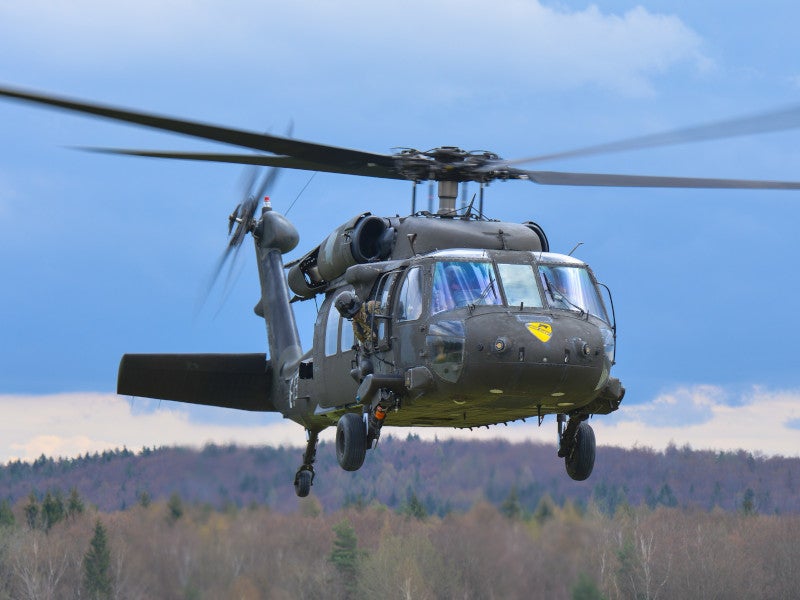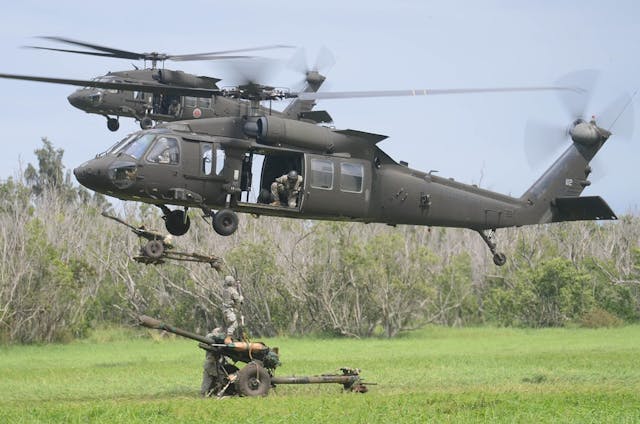History and Growth of the UH 60 Black Hawk Helicopter
History and Growth of the UH 60 Black Hawk Helicopter
Blog Article
The Influence of Lasting Practices on the Future of Airplane Procedures and Emissions Decrease
As the air travel industry encounters enhancing analysis over its ecological impact, the fostering of lasting methods arises as a critical pathway towards future aircraft procedures and emissions reduction. Developments in sustainable aviation fuels and innovations in crossbreed propulsion modern technologies stand at the leading edge of this transformation, appealing significant decreases in greenhouse gas discharges.

Summary of Sustainable Practices
Sustainable methods in airplane operations encompass a variety of techniques targeted at reducing environmental impact while maintaining operational efficiency. These practices are important in the aeronautics industry's commitment to minimizing its carbon impact and sticking to global ecological requirements. Trick efforts consist of optimizing flight courses to decrease gas usage, enhancing upkeep methods to make sure airplane run at peak efficiency, and implementing advanced technologies such as winglets and light-weight materials that boost aerodynamics.

Educating and involving staff on sustainability methods also play an important duty, promoting a culture of ecological obligation within organizations. In general, the combination of these lasting methods not only helps in reducing discharges but likewise improves the long-lasting stability of the aviation industry, guaranteeing it meets the demands of both customers and regulative bodies while adding to global sustainability goals.
Innovative Gas Alternatives
Countless cutting-edge fuel options are becoming pivotal remedies to lower the aeronautics sector's dependence on typical fossil gas. Amongst these alternatives, Lasting Aviation Fuels (SAFs) have gotten considerable attention as a result of their possible to reduce lifecycle greenhouse gas discharges by as much as 80% contrasted to traditional jet fuels. SAFs are stemmed from numerous feedstocks, including waste oils, agricultural residues, and even algae, making them a flexible choice for the industry.
An additional encouraging choice is hydrogen gas, which, when utilized in gas cells, generates only water vapor as a by-product. This zero-emission possible presents a substantial possibility for decarbonizing trip operations, particularly for short-haul trips and local airplane. Furthermore, electric propulsion systems are being discovered, leveraging battery modern technology to power aircraft. While present battery capability limits variety and payload, ongoing advancements might soon make electrical flights feasible for particular applications - uh 60.
Lastly, biofuels obtained from biomass are being explored, supplying a renewable choice that can be blended with traditional gas. Jointly, these ingenious fuel choices represent an essential action toward achieving a lasting aviation community, aligning with global emissions reduction targets and boosting the market's environmental stewardship.
Technological Improvements in Aviation

Exactly how can technological improvements improve the future of aviation? The assimilation of advanced innovations is pivotal in transforming airplane operations, enhancing efficiency, and decreasing emissions. Advancements such as hybrid and electric propulsion systems go to the forefront, promising considerable reductions in fuel intake and greenhouse gas exhausts. These systems utilize developments in battery modern technology and power administration, making it possible for airplane to run with a lower ecological footprint.
Furthermore, the application of advanced materials, such as lightweight composites, adds to enhanced aerodynamics and gas performance. Using expert system and device understanding in trip operations optimizes path planning and lowers fuel burn by allowing real-time adjustments based upon weather condition and traffic problems. Furthermore, the advancement of autonomous and from another location piloted airplane systems stands to reinvent cargo and traveler transport, possibly enhancing effectiveness while minimizing human error.
Moreover, sustainable aeronautics modern technologies, consisting of advanced air traffic administration systems, can simplify procedures and minimize congestion, leading to lower discharges during flight. These innovations collectively stand for a standard change in aviation, guaranteeing a future where sustainability and functional effectiveness are linked, therefore supporting the market's dedication to minimizing its ecological effect.

Governing Framework and Compliance
Taking into account the growing emphasis on environmental stewardship within the aviation sector, the regulatory structure governing aircraft operations is developing to promote sustainable techniques. Regulatory bodies, such as the International Civil Aviation Company (ICAO) and various nationwide aviation authorities, are presenting rigorous standards focused on minimizing exhausts and boosting operational performance.
These laws frequently include the adoption of Sustainable Aviation Gas (SAF), which has been my latest blog post identified as a vital component in accomplishing lower carbon footprints. Compliance with these policies calls for airline companies to implement functional practices and sophisticated innovations, such as maximized flight courses and enhanced air web traffic monitoring, to reduce gas intake.
Additionally, the enforcement of discharges trading plans and carbon countering campaigns is coming to be progressively widespread, compelling airline companies to keep an eye on and report their discharges accurately. Non-compliance can lead to considerable fines, therefore pushing drivers to focus on sustainability in their business versions.
Eventually, the evolving governing landscape not just drives development and financial investment in eco-friendly innovations but likewise promotes a culture of accountability within the aeronautics industry. As these structures continue to develop, the emphasis on sustainable methods will be essential to attaining the industry's long-lasting ecological goals.
Future Patterns in Aircraft Procedures
As the aeronautics market adapts to an increasingly rigid regulative atmosphere, future patterns in aircraft operations are established to concentrate on cutting-edge options that even more boost sustainability and efficiency - uh 60. Secret advancements will likely consist of the fostering of sophisticated air web traffic administration systems, which use real-time information and man-made intelligence to optimize flight courses, minimizing fuel consumption and discharges
An additional substantial fad is the enhanced combination of lasting aeronautics gas (SAFs) These options to conventional jet fuel, stemmed from sustainable sources, can dramatically reduce lifecycle greenhouse gas discharges. The sector's dedication to SAFs will likely accelerate as airlines collaborate with fuel manufacturers to make sure schedule and cost-effectiveness.
In addition, the push in the direction of electrification and crossbreed propulsion systems is obtaining energy. Emerging airplane designs will certainly incorporate these technologies, using quieter and extra reliable procedures, specifically for short-haul trips.
Conclusion
To conclude, the assimilation of lasting techniques in aircraft procedures holds substantial capacity for emissions reduction and boosted performance. The fostering of sustainable aeronautics gas, combined with advancements in electrical and hybrid propulsion systems, is important for reducing lifecycle greenhouse gas emissions. Furthermore, optimizing trip courses and embracing cutting-edge innovations add to a quieter and extra environmentally friendly aeronautics sector. Collectively, these efforts line up with worldwide sustainability goals and lead the way for a greener future in air travel.
Technologies in lasting air travel fuels and advancements in hybrid propulsion modern technologies stand at the center of this transformation, promising considerable decreases in greenhouse gas exhausts.Various innovative fuel alternatives are arising as pivotal remedies to reduce the air travel market's dependence on traditional fossil fuels - uh 60. Amongst these alternatives, Lasting Air travel Gas (SAFs) have acquired significant focus due to their potential to decrease lifecycle greenhouse gas discharges by up to 80% compared to standard jet this content fuels.Another substantial pattern link is the raised combination of sustainable aviation gas (SAFs) The fostering of lasting aeronautics gas, coupled with improvements in hybrid and electrical propulsion systems, is essential for reducing lifecycle greenhouse gas emissions
Report this page